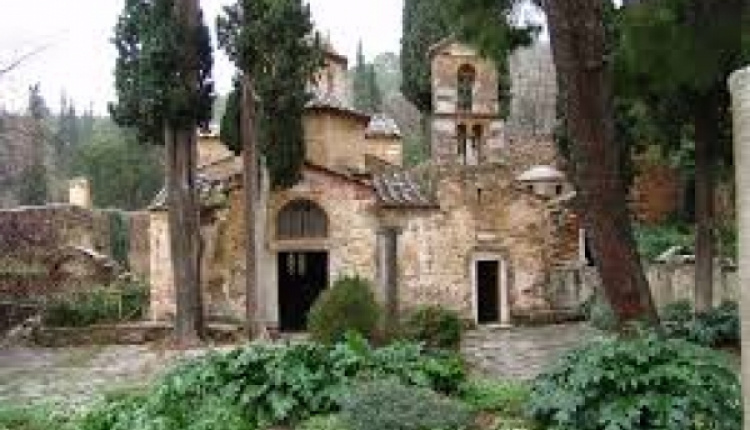The Monastery Of Kaisariani And Koutouki Cave
- by XpatAthens
- Friday, 06 March 2015

The murals that adorn the interior of the church date back to the 16th century AD. They have been influenced from the Athonite and Cretan Schools of Art.
The monastery of Kaisariani had a very rich library and became a significant centre of philosophy. Very important philosophers and scholars of the time, including George Gemistos Plethon, taught here.
The monastery of Kaisariani closed in 1832 upon a decision of king Otto’s regency, the same as almost all the monasteries of Mt Hymettus did.
With 44 different types of orchids alone, Mt Hymettus is an oasis often overlooked by people visiting Athens. Covered with pine forests and small lush valleys, this lung of Athens gives a welcome relief from the hustle and bustle of the city. With well-marked paths leading you up to green slopes, every season hides special delights.
A true botanical paradise, Mt Hymettus - also known as Trelos (Crazy) in modern times - has been renowned since antiquity for its honey and the colour of its marble, of a slightly darker hue than that of Penteli. The mountain is long, narrow, rocky and arid, with a flora that numbers over 600 plant species. These include 31 endemic species, whilst the most interesting plants are to be found among the shrubs. This low mountain has one of the richest assortments of orchids in Greece and Europe (44 species). When walking through the brush above the Monastery of Kaesariani, you can easily come across over ten orchid species in less than an hour.
Mt Hymettus provides refuge to endangered bird species, including the rare Sardinian warbler, the rock nuthatch, the peregrine falcon, the osprey and the long-legged buzzard. Island grouse are rife on the mountain and can easily be recognised by their clucking.
There are sites of cultural importance in the area, such as the Monastery of Kaesariani and the protected Kaesariani Aesthetic Forest. Mt Hymettus has dozens of caves and coves, but the Paeania cave is the most impressive sight. An interesting geological phenomenon is Lake Vouliagmeni, where the southern protrusion of the mountain skirts upon the Saronic Gulf. The lake was once a large sea cave whose roof collapsed and has, today, become a holiday and recreation resort. The entire mountain, from the Paeania cave in the north to Lake Vouliagmeni in the south, is protected by the NATURA 2000 European network.
In the summer the scent of thyme and oregano wafts with each step you take on the dried undergrowth, while in spring the blooming wild flowers decorate the mountain sides with their colours. Surprisingly, the 600 plant species make Mt Hymettus, in proportion to its size, one of the richest environments in entire Europe, as far as flora is concerned. There are also many sites of historical interest hidden on the mountain, including the remains of old churches, (ex. Saint Mark), and the monastery of Kaesariani nestled in one of the forested valleys. From the top you can enjoy the view of Athens, the Saronic Gulf and the mountains of the Peloponnese.
 Koutouki Cave is located on the eastern slope of Mount Ymittos, outside the town of Peania. It was discovered by accident several years ago, when a goat fell into the cave through a hole in its roof. The shepherd climbed in to rescue the animal and discovered one of Europe's most beautiful caves. Nowadays, visitors can enter the cave through a tunnel to admire the impressive stalagmites and stalactites. A guided tour of the cave starts every 30 minutes. It can be reached from the city centre by car in an hour.
Koutouki Cave is located on the eastern slope of Mount Ymittos, outside the town of Peania. It was discovered by accident several years ago, when a goat fell into the cave through a hole in its roof. The shepherd climbed in to rescue the animal and discovered one of Europe's most beautiful caves. Nowadays, visitors can enter the cave through a tunnel to admire the impressive stalagmites and stalactites. A guided tour of the cave starts every 30 minutes. It can be reached from the city centre by car in an hour.
Open Hours: Monday to Sunday from 09:00 AM to 04:30 PM



